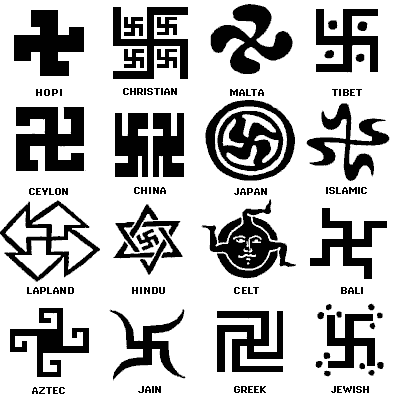Well, here I have to disagree. The manji is frequently displayed in the opposite orientation to what you would normally see a Nazi symbol in. However, the manji isn't actually "sided". The whole point is that it's a symbol of balance. There's no "front" or "back" to it. It's more frequently seen in the "left handed" orientation in Buddhist contexts, but that's really a matter of tradition and has no significance to the object itself. I've looked through my pictures of India and all of the Jain and Hindu sculptures have it going to the right. I've been all over the east and have seen it used both ways.mars wrote:It would be usual for the arms to be facing in the opposite direction to a swastika, but not always. However, the symbol would not be displayed leaning to the right, as the swastika is.
Think of it like you would the American or Australian flag. Is the field of stars/cross in the upper left hand corner or the upper right? Depends on which way the wind's blowing in relation to where you're standing, doesn't it? You wouldn't say that it's not the American or Australian flag just because you're looking at it from one side or the other. Same goes for the manji. There's no front or back.
If you Google images for it you'll find plenty of examples of it being used both ways. I guess that, thinking about it, I have been seeing it used more in the "left handed" orientation on modern buildings. Maybe there's more awareness of it's offensive connotations to westerners and an attempt to soften it a little by using it in that orientation.
I think you would see it more in Theravada traditions. They seem to love stamping everything with some sort of symbol. Don't follow Zen much so can't comment there.It is not true to say thatMost traditional Buddhist texts also have a manji as the very first character.
This may be a cultural thing, though. I've got lots of Buddhist literature from several different traditions that I bought in the east. Most of them have a manji or some similar symbol at the front of the book. Looking through the books I've bought in the west I can't find one of them that uses it. So I guess you're right when it comes to texts bought here. I suppose that, as with most things, the answer is "it depends".
Cheers, XJ.










